Intro
Discover Sad Light Therapy Treatment, a non-invasive solution for Seasonal Affective Disorder, using specialized light boxes and lamps to boost mood, energy, and mental well-being, combating winter blues and depression.
Seasonal affective disorder (SAD) is a type of depression that occurs during the same time every year, typically in the winter when there is less sunlight. It is estimated that up to 10% of the population in the United States experiences some form of seasonal depression. The lack of sunlight during the winter months can disrupt the body's internal clock, leading to feelings of lethargy, sadness, and social withdrawal. One of the most effective treatments for SAD is light therapy, also known as phototherapy. In this article, we will explore the benefits and mechanisms of sad light therapy treatment.
The concept of light therapy is based on the idea that exposure to bright light can help regulate the body's internal clock and improve mood. Light therapy typically involves sitting in front of a specialized light box that emits a specific intensity and spectrum of light. The light is designed to mimic natural outdoor light, which is much brighter than indoor lighting. When the light enters the eye, it sends a signal to the brain, which helps to regulate the body's circadian rhythms and improve mood.
The benefits of sad light therapy treatment are numerous. Studies have shown that light therapy can be as effective as medication in treating SAD, with some people experiencing significant improvements in their symptoms within a few days. Light therapy can also be used in conjunction with other treatments, such as medication and therapy, to provide a comprehensive approach to managing SAD. Additionally, light therapy is a non-invasive and relatively low-cost treatment option, making it accessible to many people.
Sad Light Therapy Benefits
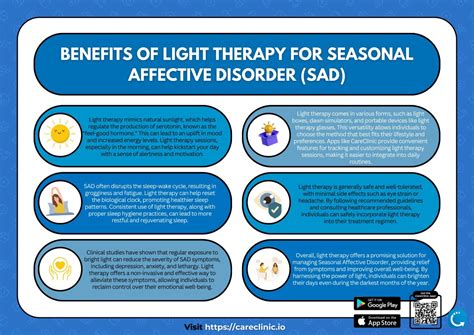
How Sad Light Therapy Works
Sad light therapy works by exposing the individual to a specific intensity and spectrum of light that mimics natural outdoor light. The light is designed to enter the eye and send a signal to the brain, which helps to regulate the body's circadian rhythms. The exact mechanisms of light therapy are not fully understood, but it is thought that the light helps to regulate the release of certain neurotransmitters, such as serotonin and melatonin, which play a crucial role in mood regulation.Sad Light Therapy Treatment Options
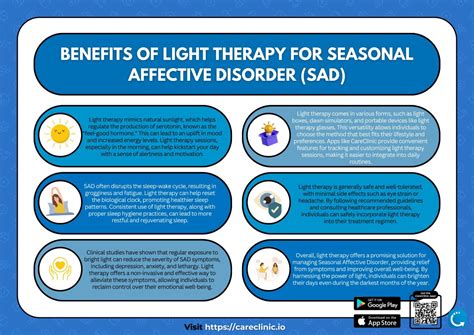
Sad Light Therapy Treatment Guidelines
When using sad light therapy treatment, it is essential to follow certain guidelines to ensure effectiveness and safety. The American Psychiatric Association recommends that individuals use a light box that emits 10,000 lux of light, which is approximately 20 times brighter than normal indoor lighting. The light should be used for 20-30 minutes in the morning, and the individual should sit in front of the light with their eyes open, but not staring directly at the light.Sad Light Therapy Side Effects

Sad Light Therapy Devices
There are several sad light therapy devices available on the market, ranging from basic light boxes to more advanced portable devices. When choosing a light therapy device, it is essential to consider the intensity and spectrum of the light, as well as the device's safety features and user reviews. Some popular sad light therapy devices include the Philips SmartSleep, the Lumos BodyCharge, and the Verilux HappyLight.Sad Light Therapy for Anxiety
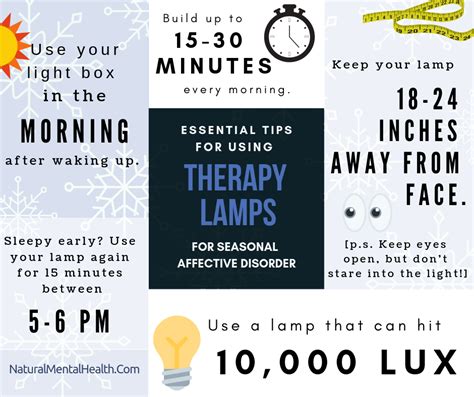
Sad Light Therapy for Depression
Sad light therapy can also be used to treat depression, which is a common comorbidity with SAD. The light helps to regulate the body's internal clock and improve mood, which can help to reduce symptoms of depression. Additionally, light therapy can be used in conjunction with other treatments, such as medication and therapy, to provide a comprehensive approach to managing depression.Sad Light Therapy Tips
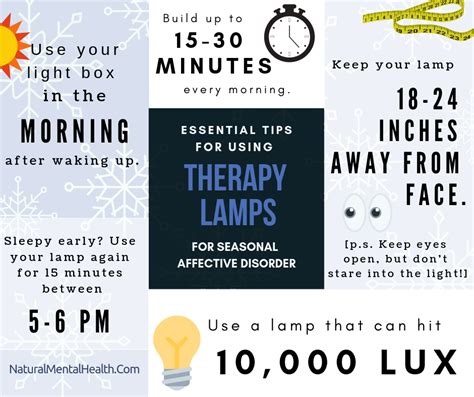
Sad Light Therapy Benefits for Mental Health
The benefits of sad light therapy treatment for mental health are numerous. Light therapy can help to regulate the body's internal clock, improve mood, and reduce symptoms of anxiety and depression. Additionally, light therapy can be used in conjunction with other treatments, such as medication and therapy, to provide a comprehensive approach to managing mental health.Sad Light Therapy Research
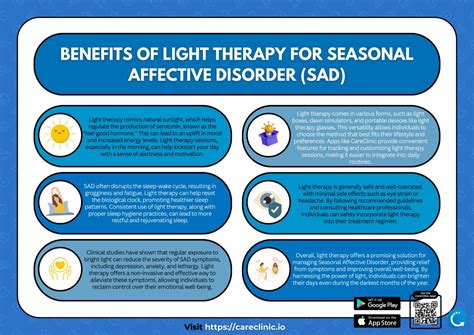
Sad Light Therapy Future Directions
The future of sad light therapy treatment is promising, with ongoing research and development of new devices and technologies. One area of research is the use of portable light devices, which can be used on-the-go to provide a convenient and accessible treatment option. Another area of research is the use of dawn simulators, which can be used to gradually increase the light in the room over a set period, mimicking the sunrise and helping to wake the individual up.What is sad light therapy treatment?
+Sad light therapy treatment is a type of treatment that uses a specialized light box to help regulate the body's internal clock and improve mood.
How does sad light therapy work?
+Sad light therapy works by exposing the individual to a specific intensity and spectrum of light that mimics natural outdoor light, which helps to regulate the body's circadian rhythms and improve mood.
What are the benefits of sad light therapy treatment?
+The benefits of sad light therapy treatment include improved mood, increased energy, and enhanced cognitive function, as well as reduced symptoms of anxiety and depression.
In summary, sad light therapy treatment is a safe and effective treatment option for seasonal affective disorder and other conditions related to disruptions in the body's internal clock. The benefits of sad light therapy treatment include improved mood, increased energy, and enhanced cognitive function, as well as reduced symptoms of anxiety and depression. By following the guidelines and tips outlined in this article, individuals can use sad light therapy treatment to improve their mental health and overall well-being. We encourage readers to share their experiences with sad light therapy treatment and to ask any questions they may have about this topic. Additionally, we invite readers to explore other resources and articles on this topic to learn more about the benefits and mechanisms of sad light therapy treatment.
